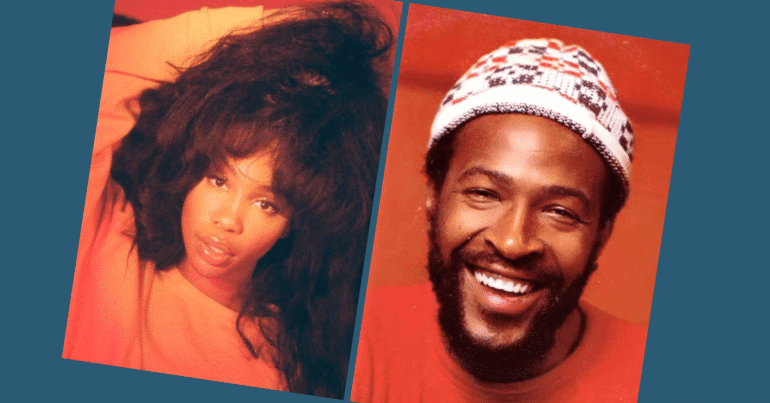All you need to know on R&B music: the history of R&B, evolution, sub-genres and artists that have made contemporary R&B what it is today
R&B (Rhythm and Blues) is a genre invented by black American musicians nearly a century ago. R&B is one of the most commercially and culturally important genres of the past century. It’s gone through many changes over the years, but its roots remain. With roots in Jazz and Blues, R&B is known for its use of rhythm and melody, backed by keys, looped drums, synths and strong bass lines.
R&B has spawned countless sub-genres and produced some of the most influential artists in music. R&B’s heritage and influence can be heard, across music genres, but particularly in today’s Pop music. There is simply no contemporary pop music without R&B and its influence.
So, let’s dive into the rich history of R&B, it’s evolution over the years and explore the sounds and artists that have made it what it is today.
- See also Is R&B Dead in 2023? – Addressing the question that just won’t quite go away
History of R&B
1920s – 1940s: Jazz and Blues
The origins of R&B can be traced back to the Jazz and Blues of the 1920s and 30s. When African American musicians were performing a mixture of Blues, Jazz, and Gospel music in the clubs and juke joints of the South. Singers like Bessie Smith and Ma Rainey, sang about the hardships of life and the struggle for civil rights. Their music was raw, emotional, and unapologetically black.
In the 1940s, a new style of R&B emerged, known as jump blues. This sub-genre was characterized by its up-tempo rhythms and catchy melodies. It was the perfect party music and quickly gained popularity among young African Americans. Artists like Louis Jordan and Big Joe Turner were some of the biggest names in jump blues and laid the foundation for the rock and roll music that would come in the 1950s.
- See our list of modern jazz / contemporary jazz artists keeping alive and reinventing the sound of jazz
1950s and 60s: The Golden Age of R&B
The contemporary sound of R&B really started to take shape in the 1950s and 60s. Crucially, during this time was the rise of doo-wop, a vocal style that relied heavily on harmonies and falsetto singing. Doo-wop groups like The Drifters and The Platters had a string of hits during this time and helped to popularize the sound of R&B.
Soul music also emerges from its Jazz and Blues predecessors. Soul music was a more sophisticated version of R&B that featured emotional vocals, smooth melodies and lush instrumental arrangements. Artists like Sam Cooke, Otis Redding, and Aretha Franklin became icons of the soul music movement. Undeniably, these singers helped define the sound of the era and of this sub-genre of R&B.
Crucially, the 1960s also saw the rise of Motown. Motown is a historic record label that popularised and became synonymous with R&B and Soul Music. Seamlessly bringing R&B and Soul together, Motown artists like The Supremes, The Temptations, Stevie Wonder and Marvin Gaye dominated the charts. Their music became wildly popular and helped bring black music and R&B into the mainstream. Motown was known for its slick, rich production and catchy hooks, and its influence can still be heard in modern R&B music today. Motown alum, Stevie Wonder went on to become the first black winner of Album of the Year at the Grammys.
1970s and 80s: Funk, Disco and New Jack Swing
In the 1970s, R&B took a turn towards Funk. Credited as an invention of James Brown, the Godfather of Soul, Funk emphasises rhythm and groove over melody. It’s characterised by heavy bass lines and percussion-led rhythms, rather than melody and chord progression. This combination gives the music a distinctly danceable, infectious feel. Importantly, James Brown’s breakout hit, Cold Sweat ushered in a new era of R&B through Funk. Funk bands like Sly and the Family Stone and Parliament-Funkadelic emerged and were hugely influential with many chart successes. Funk remains highly influential in contemporary music, often sampled in hip-hop music and heavily referenced for successful pop albums from Bruno Mars, Lizzo, Dua Lipa.
The 1970s also saw the rise of Disco, a genre that blended R&B, funk, and electronic music. Disco was popularized by artists like Donna Summer, Chic and The Bee Gees, and was known for its upbeat, danceable rhythms. Disco was a divisive genre, with many seeing it as shallow and commercial, but it nonetheless had a major impact on R&B music and culture.
In the 1980s, R&B took yet another turn with the rise of new jack swing, a sub-genre that combined R&B with hip-hop and electronic music. New jack swing was characterized by its use of drum machines, synthesizers, and rap verses. It was popularised by the likes of Janet Jackson, Boys II Men, Bel Biv DeVoe and New Edition.
1990s: Mainstream Contemporary R&B, Hip Hop Soul and Neo-Soul
With the popularity of New Jack Swing, came a mainstream sound in 90s R&B that heavily leaned into contemporary Hip Hop production. Dominated by the likes of TLC, then Puff Daddy and his Bad Boy label signees, Faith Evans, 112 and Mary J Blige. The term ‘Hip Hop Soul’ was originally used to describe this sound.
In the late 1990s, R&B saw the emergence of Neo-Soul. In contrast to Hip Hop Soul, Neo-Soul emphasizes live instrumentation and the smooth sophisticated melodies of classical Soul music. However, unlike classical Soul, it has heavy Hip Hop drum patterns and influences in how it delivers live instrumentation. It was first popularised by Lauryn Hill in her seminal album ‘The Miseducation of Lauryn Hill’. As Lauryn Hill has never released a sophomore album, the so-called Soulquarian movement became the torch-bearers for Neo-Soul. Producer Questlove and his close collaborators, J-Dilla, D’Angelo, Erykah Badu, Bilal and others brought back depth and emotion to R&B music.
Sub-genres of contemporary R&B / Soul Music
In recent years, R&B has continued to evolve, with artists incorporating elements of electronic dance music, trap, and other genres. Artists like Sza, Summer Walker and Frank Ocean have dominated the charts with their hits that blend R&B roots, soulful vocals with modern production.
30 Best Contemporary R&B Albums of the past decade (2010 to now) 40 Contemporary R&B Artists to Watch 40 Contemporary R&B Songs - a playlist of R&B hits and chart toppers that prove the genre is timelessly relevant today 100 New R&B Songs - An ever-fresh playlist of selects of the most essential new songs in R&B, Soul & Soulful Rap right now R&B Playlists - Our selection of playlists for different moods and moments across the sub-genres of R&B Is R&B Dead in 2023? - Addressing the question that just won’t quite go away
From soulful ballads to upbeat dance tracks, R&B has something for everyone. Whether you’re a fan of classic soul or contemporary R&B, the genre has a rich tapestry:
1. Neo-Soul
Neo-Soul is a sub-genre of R&B that emerged in the late 1990s. It is characterized by its use of soulful vocals, live instrumentation, and a conscious approach to lyrics. The genre was popularized by artists such as Erykah Badu, Jill Scott, and D’Angelo. Neo-Soul has a unique sound that blends R&B, jazz, funk, and hip-hop. It is a genre that celebrates black culture, spirituality, and social consciousness
- For more on Neo-Soul, listen to our Neo-Soul playlist of 80 iconic Neo-Soul anthems
2. Trap Soul / Trap&B
Trap Soul is a sub-genre of R&B that emerged in the 2010s. It is characterized by its use of trap beats, auto-tuned vocals, and emotional lyrics. The genre was popularized by artists such as Bryson Tiller, Tory Lanez, and PARTYNEXTDOOR. Trap Soul is a genre that celebrates heartbreak, love, and the struggles of relationships.
- For more on Trap Soul, listen to our Trap Soul playlist of 40+ best songs in Trap Soul
3. Alternative Soul / Alternative R&B
Alternative R&B is a sub-genre of R&B that emerged in the 2010s. It is characterized by its use of experimental sounds, non-traditional song structures, and genre-bending. The genre was popularized by artists such as Frank Ocean, The Weeknd, and SZA. Alternative R&B is a genre that celebrates individuality, creativity, and pushing the boundaries of what R&B can be.
- For more on Alternative R&B, listen to our Alternative R&B playlist of some of the best boundary-pushing R&B songs
4. Contemporary R&B / Pop R&B
Contemporary R&B / Pop R&B is a sub-genre of R&B that emerged in the 1980s. It describes the kind of R&B music that has had mainstream chart success since then. It is characterized by its use of electronic instrumentation, pop influences, and catchy hooks. The genre was popularized by artists such as Whitney Houston, Mariah Carey, and Janet Jackson. Contemporary R&B is a genre that celebrates commercial success, love, and the joys of life. More recently artists like Sza, Ella Mai, Chris Brown and Summer Walker have led the charge on contemporary R&B / Pop R&B.
- For more on Contemporary R&B, listen to our playlist of contemporary R&B hit songs and chart toppers
5. Indie Soul
Excitingly, R&B continues to spawn more sub-genres. Notably, Indie Soul is a new strand that is fast rising in popularity. Artists like SAULT and Hiatus Kayote have been making Soul music heavily influenced by a range of alternative sounds and indie rock / folk elements. In 2022, Steve Lacy took the genre to mainstream success with the viral success of his hit ‘Bad habit‘ and album, ‘Gemini Rights’. Gemini Rights offers a blend of Indie Rock, Soul and Funk that is experimental, yet accessible. With artists embracing genre-fluidity more and more, Indie Soul is here to stay.
- Listen to our Indie Soul playlist


